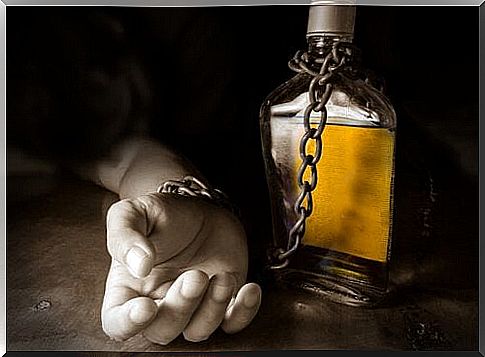The Thin Line Between Alcoholism And A Habit

Today you have left the office and, just like every other Friday afternoon, arranged a meeting with friends for a drink. It’s your tradition, and it’s almost the only way for you to keep socializing. This afternoon, however, is different. One of your friends has a surprise for everyone – he has been diagnosed with alcoholism. Furthermore, your habit of meeting for drinks every Friday is part of the problem.
This bomb shocks you and your friends. It makes you all think it’s a joke. But it is not. It is a real problem, and unfortunately a common one. It’s hard to understand because you drink too. You also go to these gatherings with friends and you also participate in the habit. But despite that, you do not suffer from alcoholism. You’re not an alcoholic. At least that’s what you think…

Diagnostic classifications, such as DSM-5, defines alcohol disease as “a set of behavioral and physical symptoms, including withdrawal, tolerance and an intense desire to consume” .
Within the criteria , they emphasize the frequency and regular consumption of alcohol as an important part of the diagnosis. But can this recurring consumption be considered a habit? According to the Royal Spanish Academy, we must take the sixth definition of the word into account. It is defined as “a situation of addiction to certain drugs” .
But is a habit in itself what really causes an addiction? The answer is no. Furthermore, in the case of alcoholism, it is a disease that develops due to various factors. These factors include psychological, social and biological aspects. It goes from a simple habit to an addiction. In turn, this consumption modifies the cerebral structure and behavior of the individual in question.
This means that it is a mixture of biological, social and behavioral factors that make a habit something more. And this is the most dangerous part, because there are some factors we can control, and others that we can not control. This makes it difficult to predict who, in the same situation, would develop an addiction and who would not.

Then why is it that one person in a group of friends develops alcoholism while the rest do not? Factors influencing the development of alcohol dependence can be summarized as follows:
The biological factors that contribute to alcoholism include everything from genetic inheritance to changes in various neurotransmitters and cerebral structures, which is caused by the consumption habit and which in some predisposed individuals occurs at a faster rate.
Alcohol consumption disease is easier to find among relatives. 40-60% of the variance in the risk of developing alcoholism can be explained by genetic influence. Furthermore , the risk is 3-4 times higher for children of people with the disease.
When it comes to cerebral functions and neurotransmitters, it has been proven that dopamine is involved in the beginning of addictions. This is because dopamine is associated with pleasure as well as the so-called cerebral reward system, which mainly consists of the

The perception each individual has about alcohol consumption and his use of alcohol can be very important. If the person in the above group of friends who developed alcoholism used to brag that he could handle most alcohol, he probably drank a lot more than his friends.
In addition to putting your own health in the risk zone by generating harmful habits, you can lose control and develop an addiction. Therefore, the behavior patterns in adolescence, where this type of behavior begins, are very important. Young people’s attitude towards the control and underestimation of the need for social confirmation is very important.
The perception of drinking and the availability of alcohol in the society in which the individual finds himself are also very important factors. It has been proven that societies with more permissive alcohol consumption have higher levels of alcoholism.
Because of all this, we must point out that there is a very thin line between alcoholism and habit. In this line there are factors that are within our control (behavior) and others that are not (biological risks). Therefore, you must be very careful and always consume alcohol in moderation or, even better, avoid it altogether.








